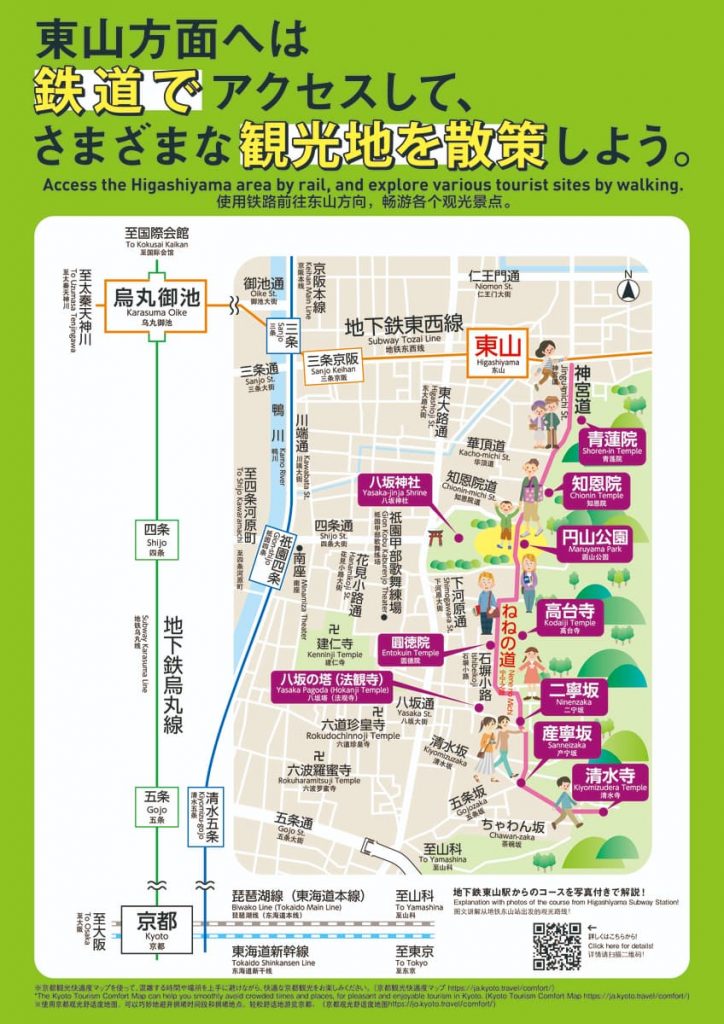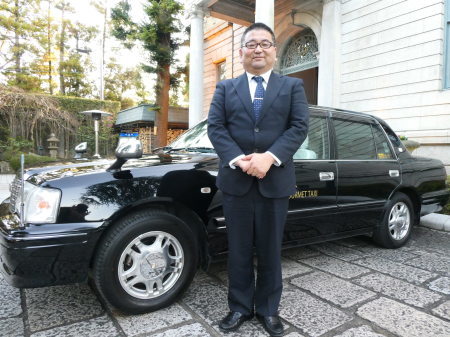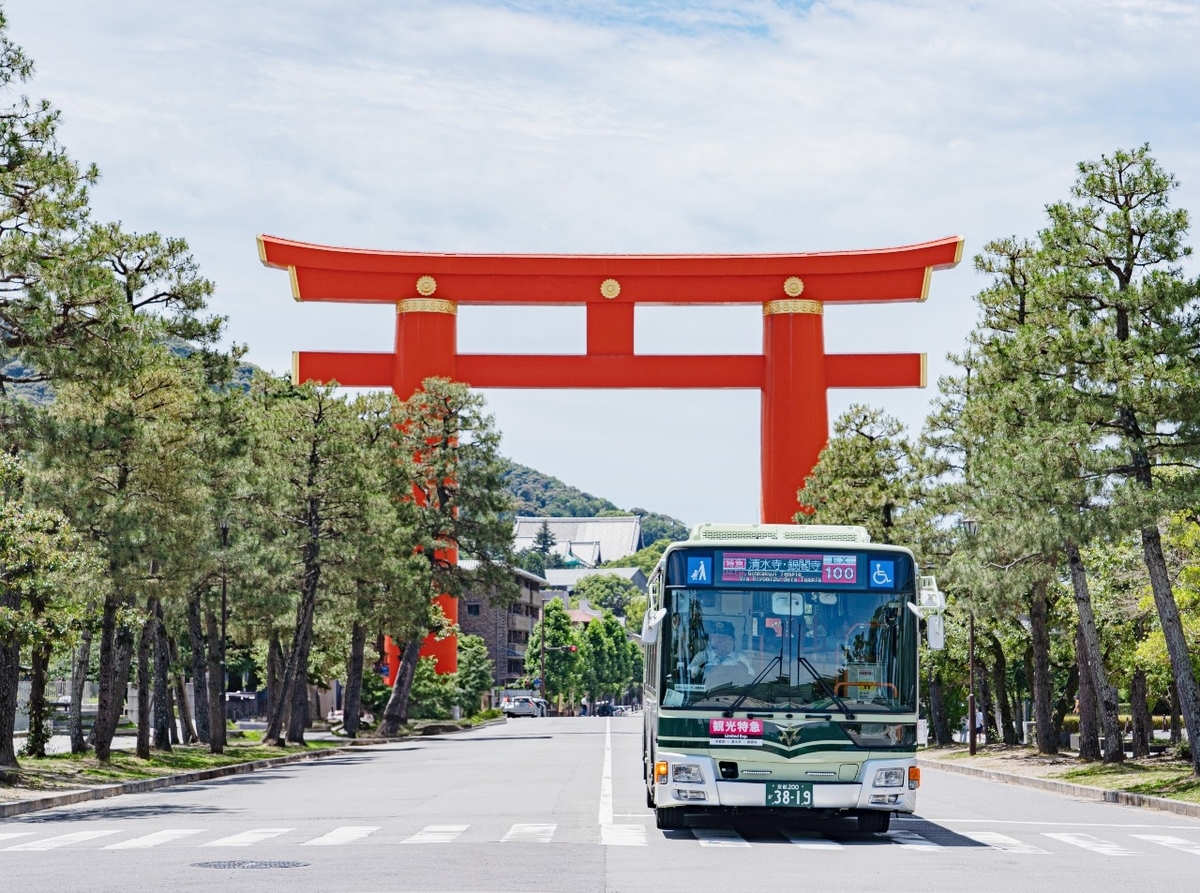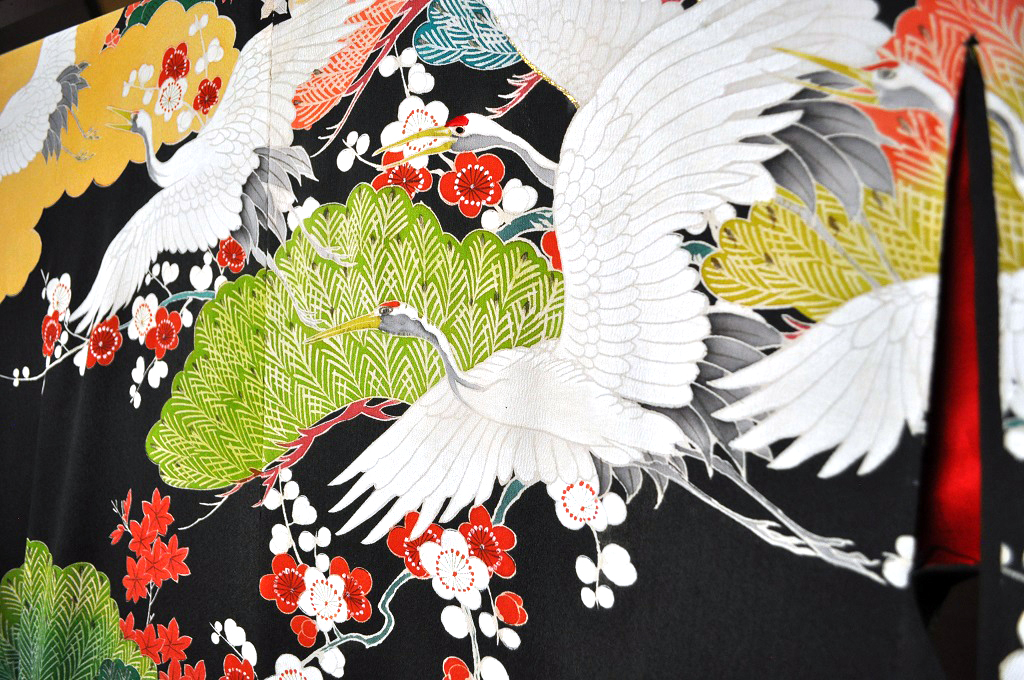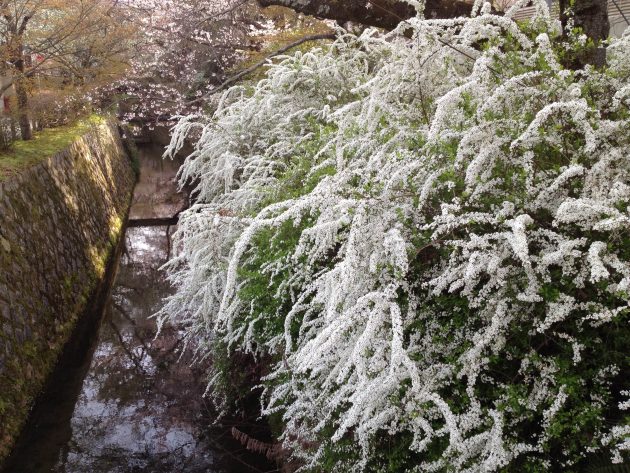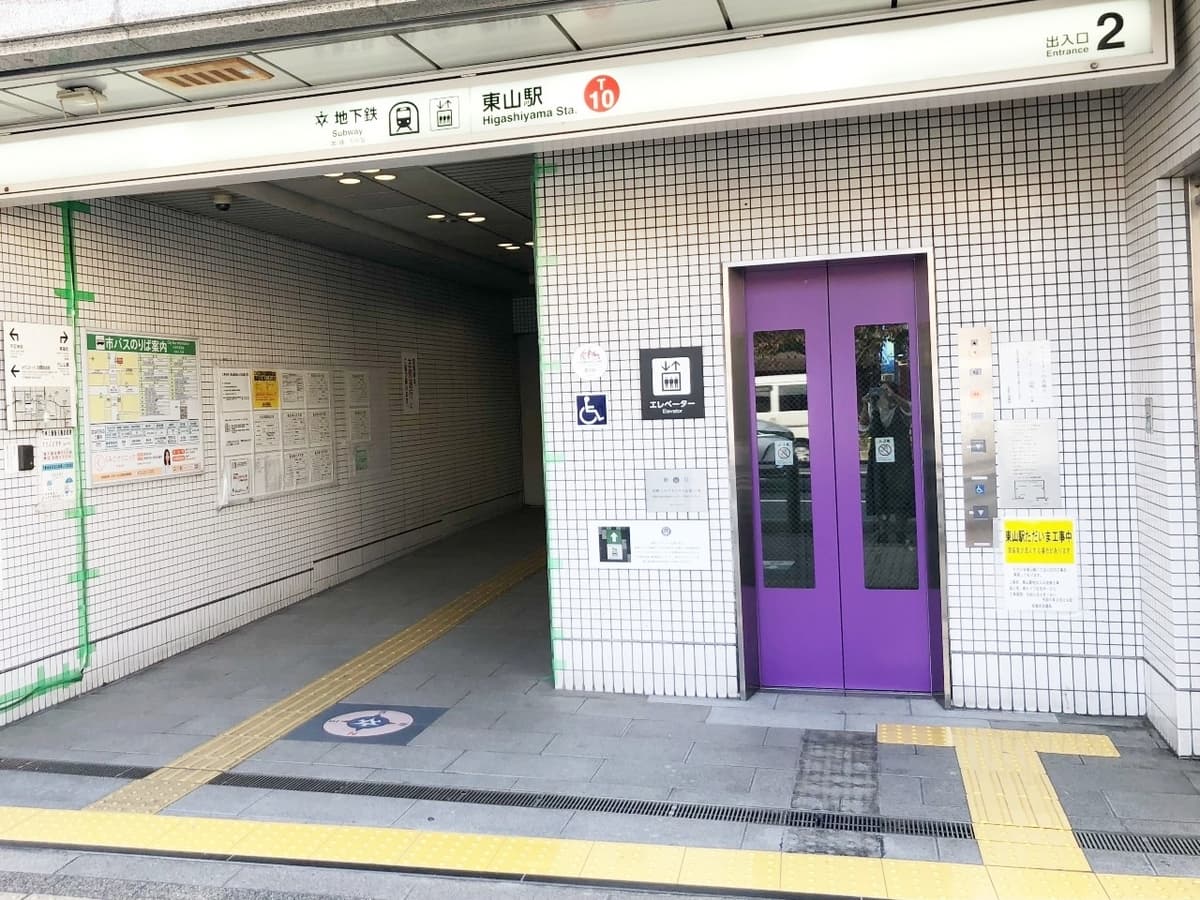
The Higashiyama area, one of the most popular tourist destinations in Kyoto, is home to a number of attractions. Famous landmarks such as Kiyomizu Temple, Kodaiji Temple, and Chion-in Temple are actually all within walking distance of each other. A visit to this area is also a great chance for a nice walk.
Recommended Walking Route from Higashiyama Station
When visiting Kiyomizu Temple, the recommended route is one that starts at Higashiyama Station and takes you to various spots along the way.
Walking the entire route takes roughly 40 to 45 minutes.
Approximate walking times
Higashiyama Station → (10 min.) → Shoren-in Temple → (5 min.) → Chion-in Temple → (2 min.) → Maruyama Park → (5 min.) → Kodaiji Temple & Entoku-in Temple → (5 min.) → Ninenzaka → (5 min.) → Sannenzaka → (10 min.) → Kiyomizu Temple
Click here or on the image to enlarge it
Easy access to Kiyomizu-dera and Kinkaku-ji Temples (video guide)
1. Take the subway from Kyoto Station to Higashiyama Station
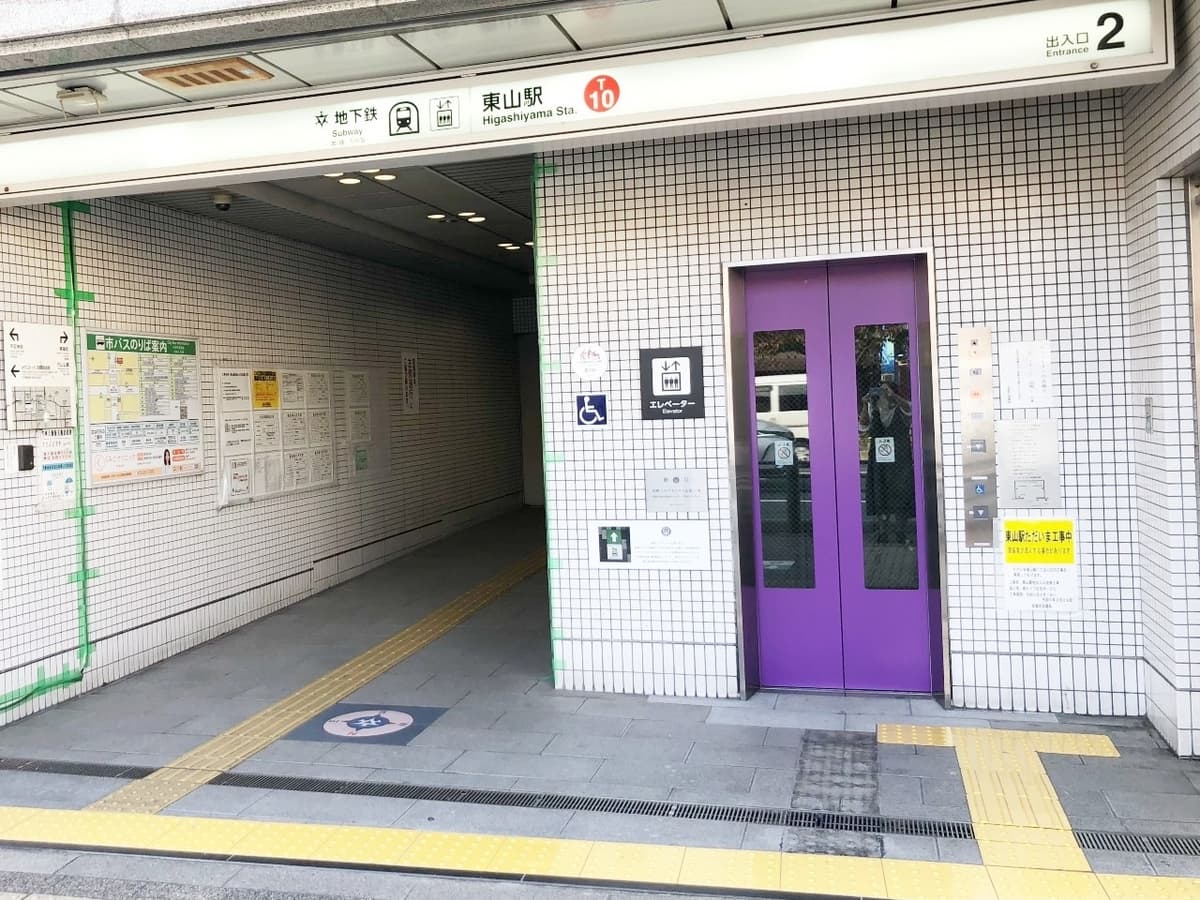
From Kyoto Station, take the Subway Karasuma Line bound for Kokusaikaikan. Get off at the third stop, Karasuma Oike, and change to the Subway Tozai Line bound for either Rokujizo or Biwako-hamaotsu. Get off at the third stop, which is Higashiyama Station.
It takes about 15 minutes, and the fare for adults is 260 yen. At Higashiyama Station, take Exit 2 to street level.
Furukawacho Shopping Street, which can be found right as you emerge from Exit 2, is also a great place to stop by. It’s well known for its retro atmosphere reminiscent of Japan’s Showa Era (1926-1989).
2. Walk along Jingu-michi to Shoren-in Temple and Chion-in Temple
The first leg of this walk will take you down a road named Jingu-michi. From Higashiyama Station, head east and then turn right (south) when you reach the Sanjojingumichi intersection.
Going the opposite direction (north) here will take you to Heian Jingu Shrine and the Kyoto City Kyocera Museum of Art.

After walking a short distance along Jingu-michi, you will see Shoren-in Temple on your left. Its large camphor trees are quite a magnificent sight. This temple houses the Painting of the Blue Cetaka, a national treasure, and also has a garden designed by the renowned landscape artist Soami.
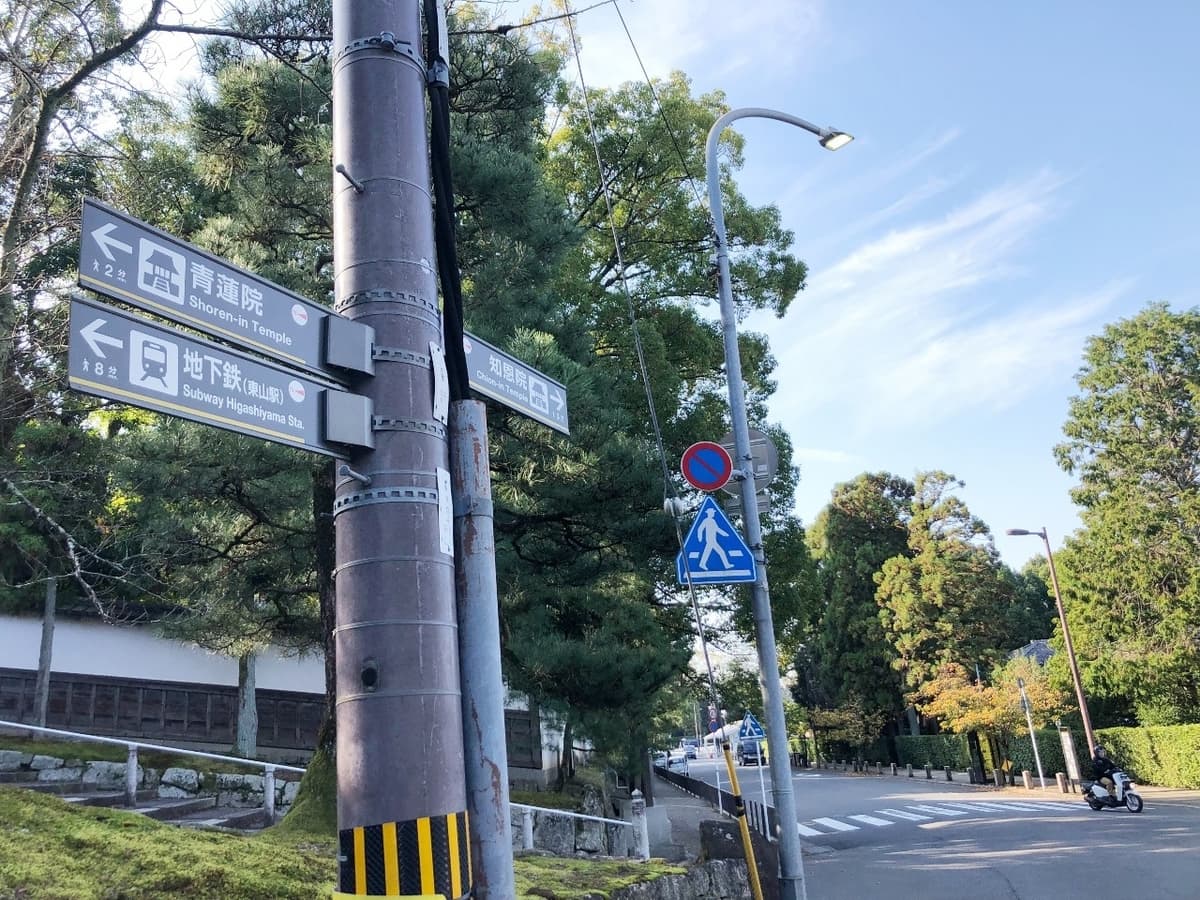
Chion-in Temple sign

Chion-in Temple
Walk further along the road, and you will come upon the information board for Chion-in Temple. Go straight for about another 5 minutes, and you will see the large Sanmon Gate on your left. Chion-in is the head temple of the Jodo (Pure Land) sect of Buddhism, and is also famous for its historical connections to feudal lord Tokugawa Ieyasu.
The road in front of Chion-in Temple is rather wide, and there you can find souvenir shops and also the Chion-in Wajun-Kaikan hotel.
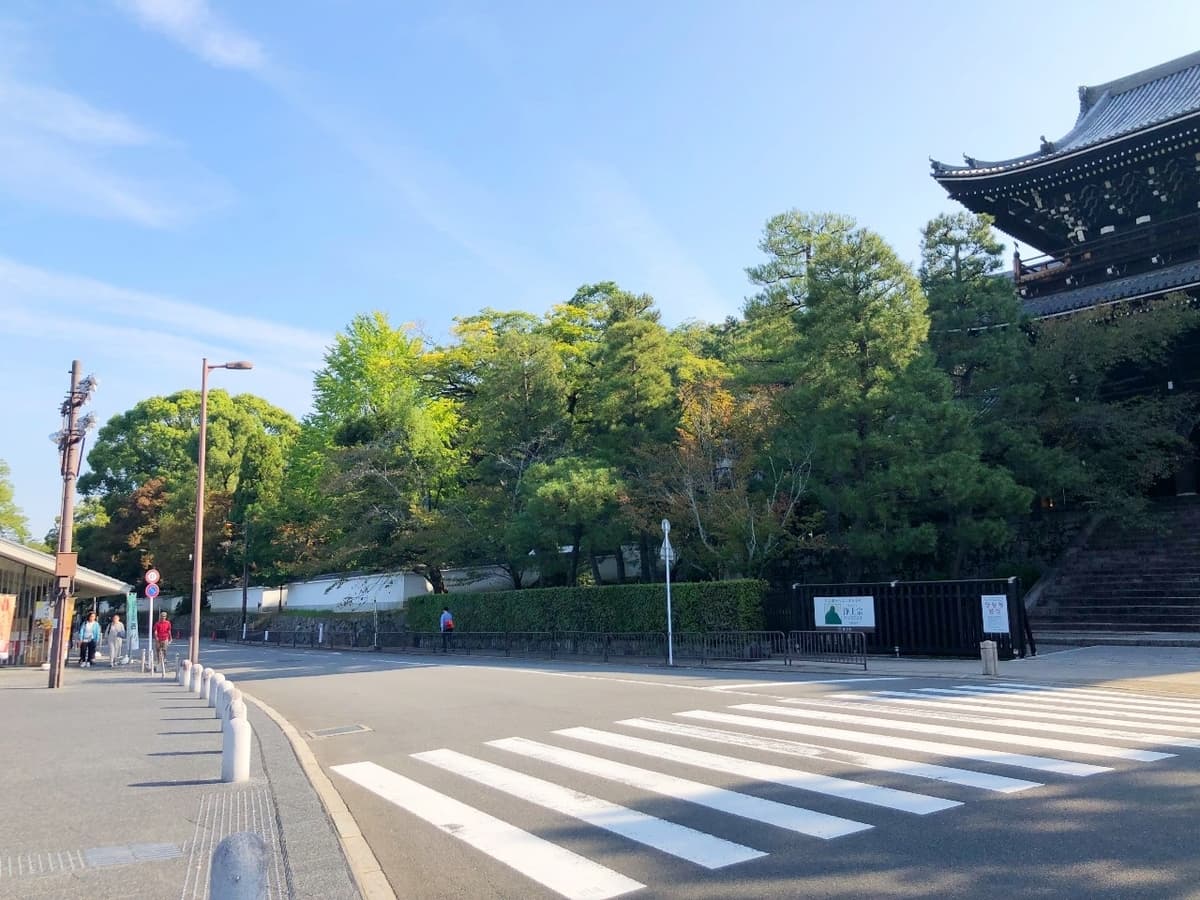
Once you pass Chion-in Temple, right next to it is Maruyama Park. Enter the park through the south gate.
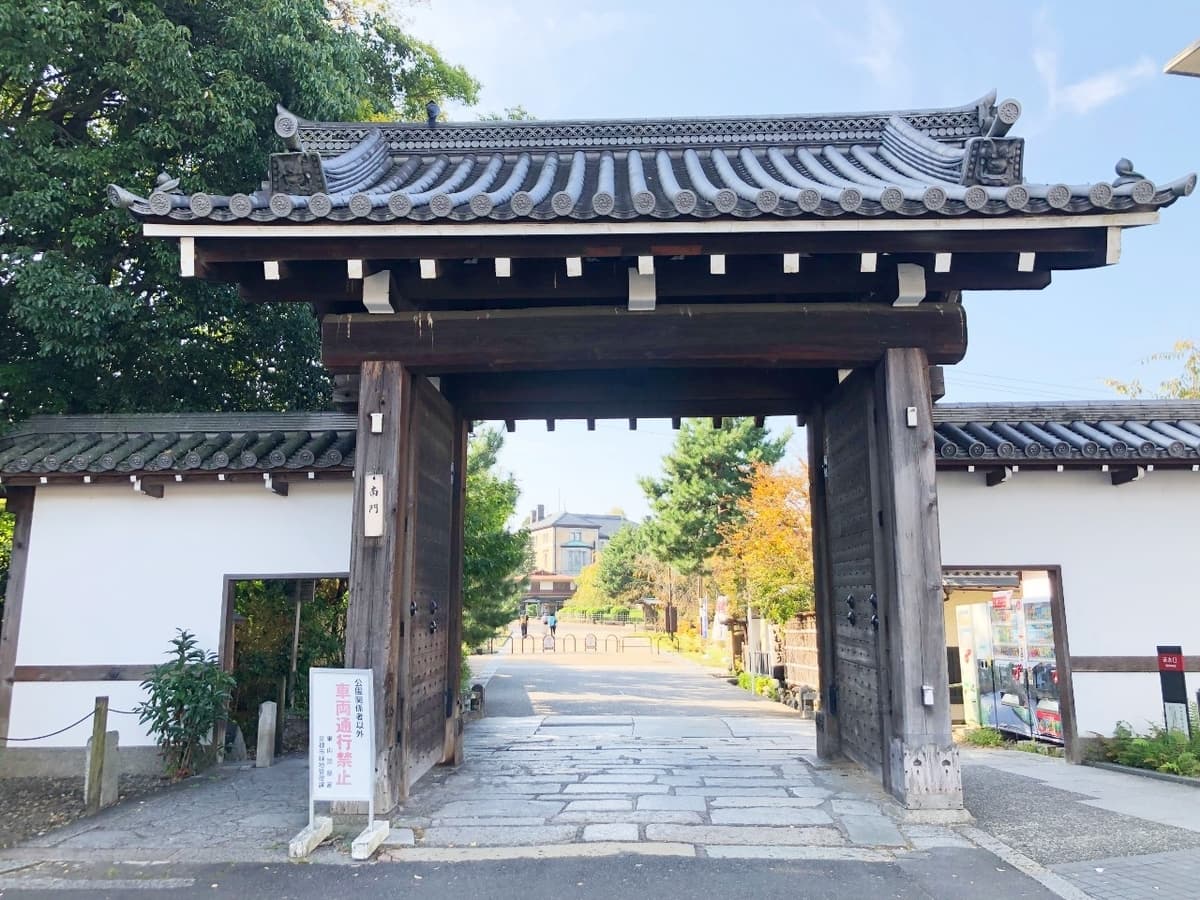
The south gate of Chion-in Temple, which leads to Maruyama Park
Maruyama Park is a garden with expansive grounds and lots of beautiful scenery to enjoy. The weeping cherry blossoms are very popular in the spring.
Upon entering Maruyama Park, head right (west) and you will see Yasaka Shrine
3. Walk along Nene-no-Michi to Kodaiji Temple and Entoku-in Temple
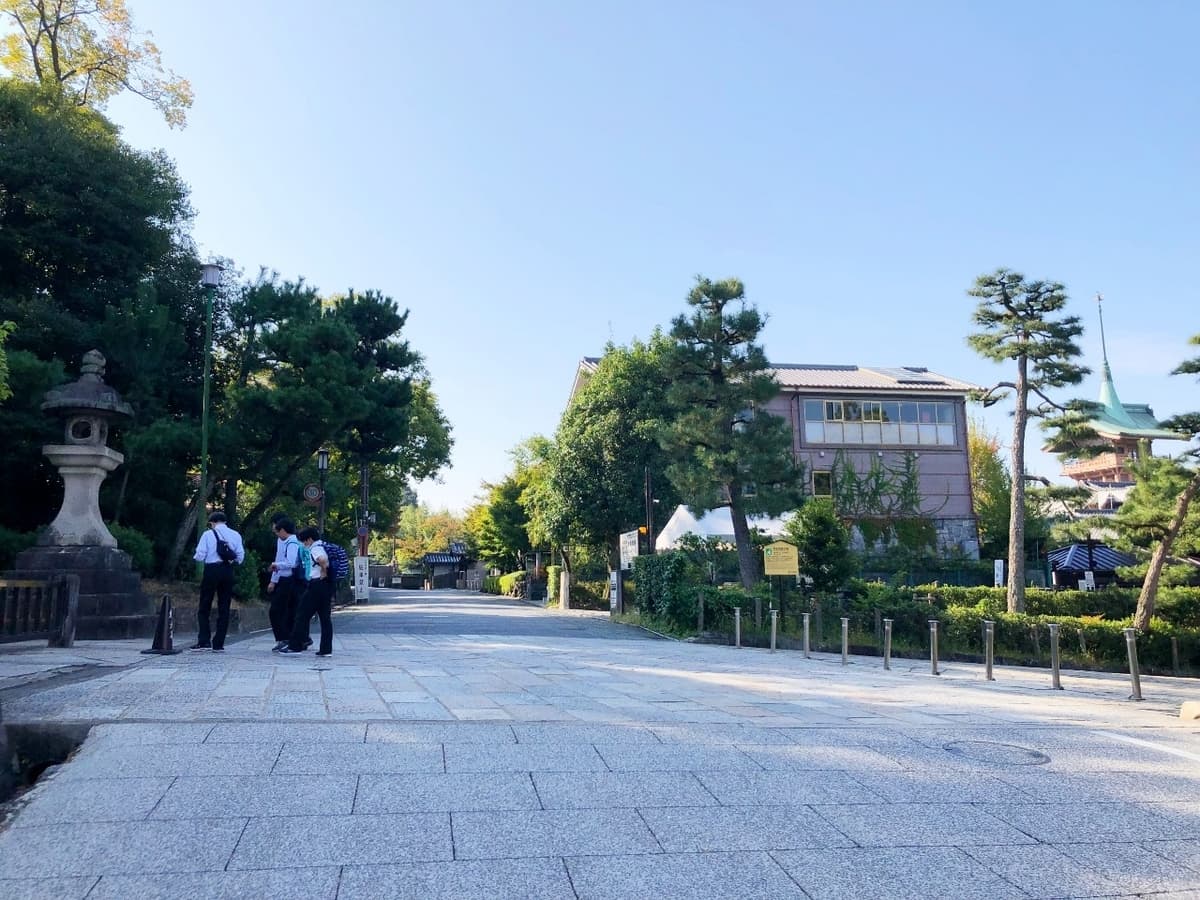
After passing through Maruyama Park, you will be on Nene-no-Michi. Proceed straight along this beautifully paved road. After walking for about 5 minutes, you will come across a sign at the end of the road. Turn right (west) to arrive at Kodaiji Temple. There will be a large Jizo statue on the right side, making it easy to recognize.
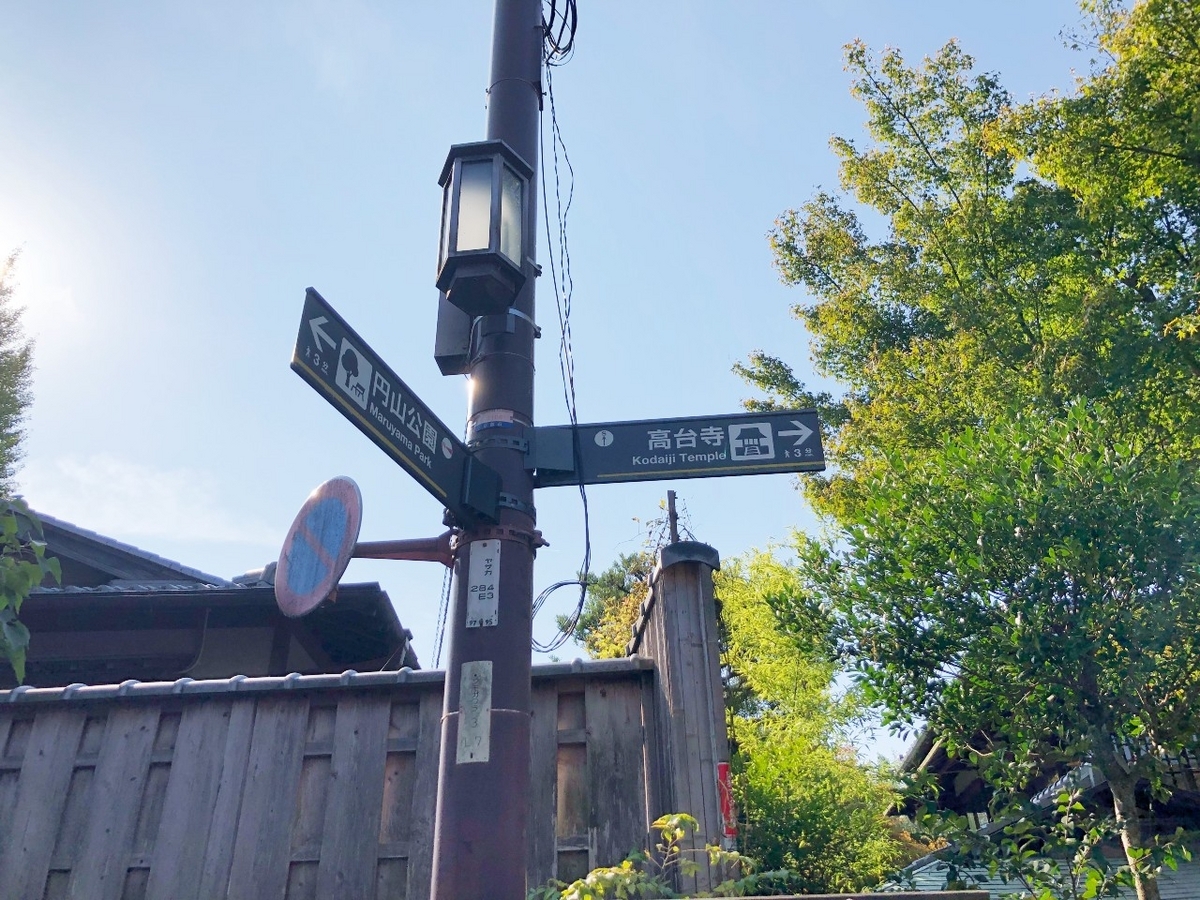
Kodaiji Temple sign

The landmark Jizo statue
Turn right and you will come upon a beautiful road full of character.
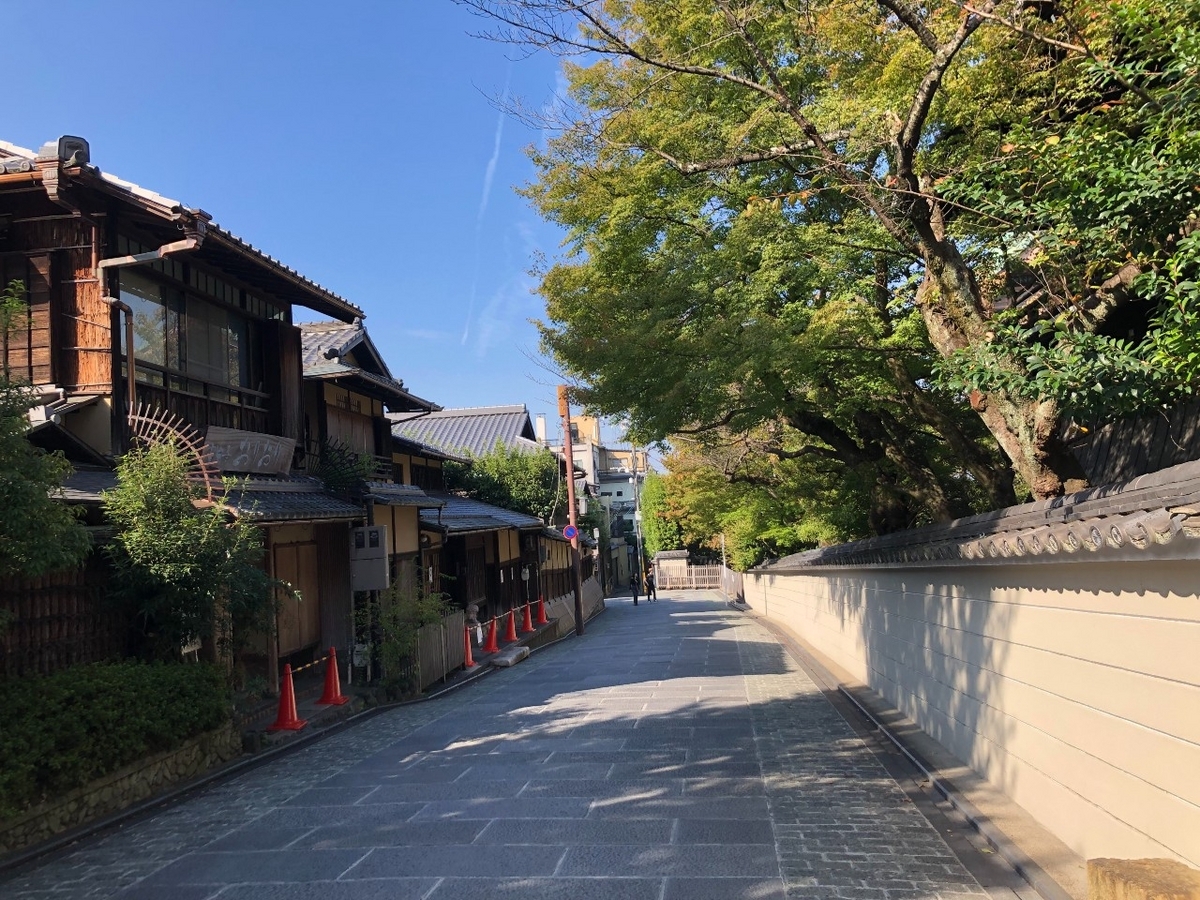
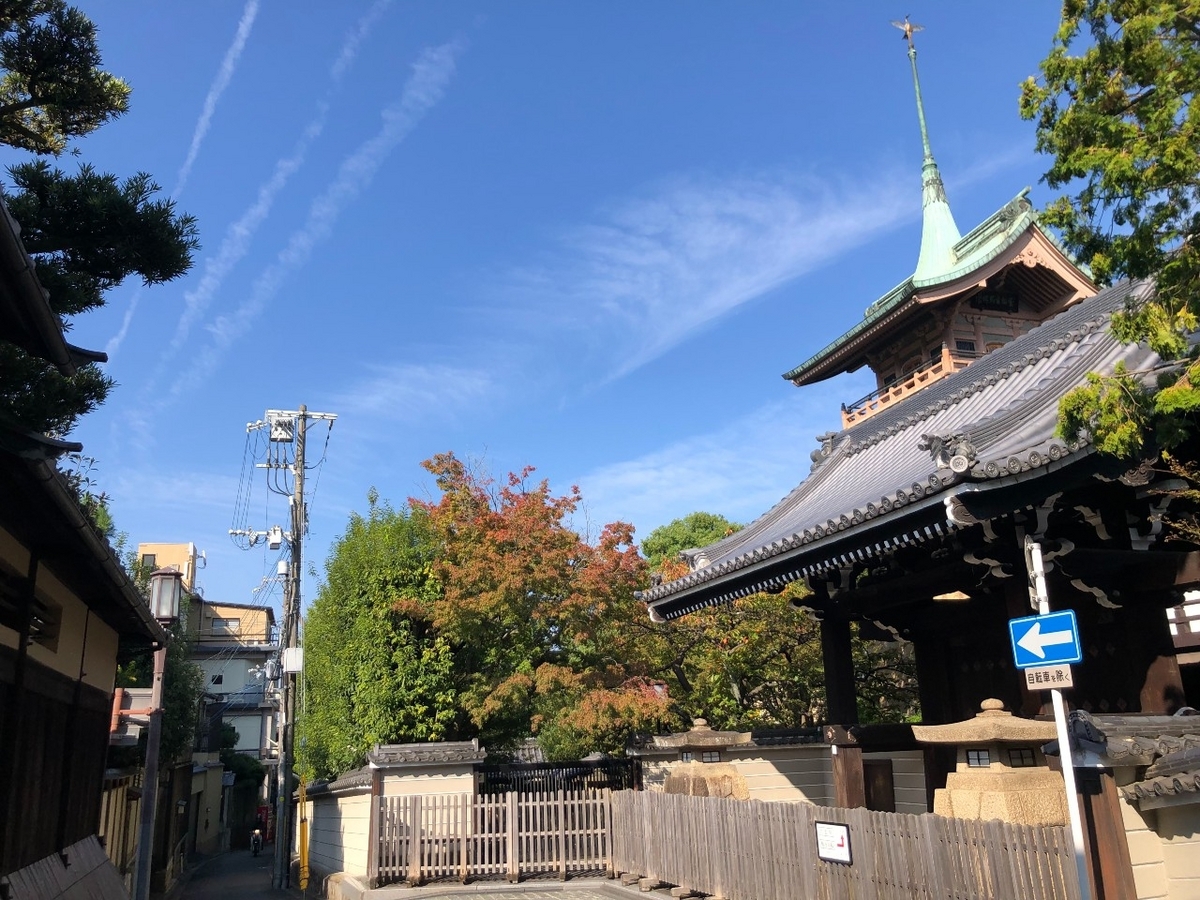
On the right, you can see Gionkaku, which is modeled after the floats in the procession of Daiun-in Temple’s Gion Festival. Go straight and then turn right (south).
Nene-no-Michi is a stone-paved road with a quintessentially Kyoto-esque atmosphere. It was named after Nene, also known as Kitanomandokoro, the wife of feudal lord Toyotomi Hideyoshi, who spent the last years of her life here.

This is a beautiful road that embodies the historical depth of Kyoto.
www.youtube.com
You can see what’s going on at Nene-no-Michi via the live camera feed. If it’s crowded, you can enjoy Shimogawa-dori, one street to the east, as an alternate route.
Please also check the map to see the sightseeing comfort level from Nene-no-Michi to Kiyomizuzaka:
Kyoto Travel Congestion Forecast

Steps leading to Kodaiji Temple
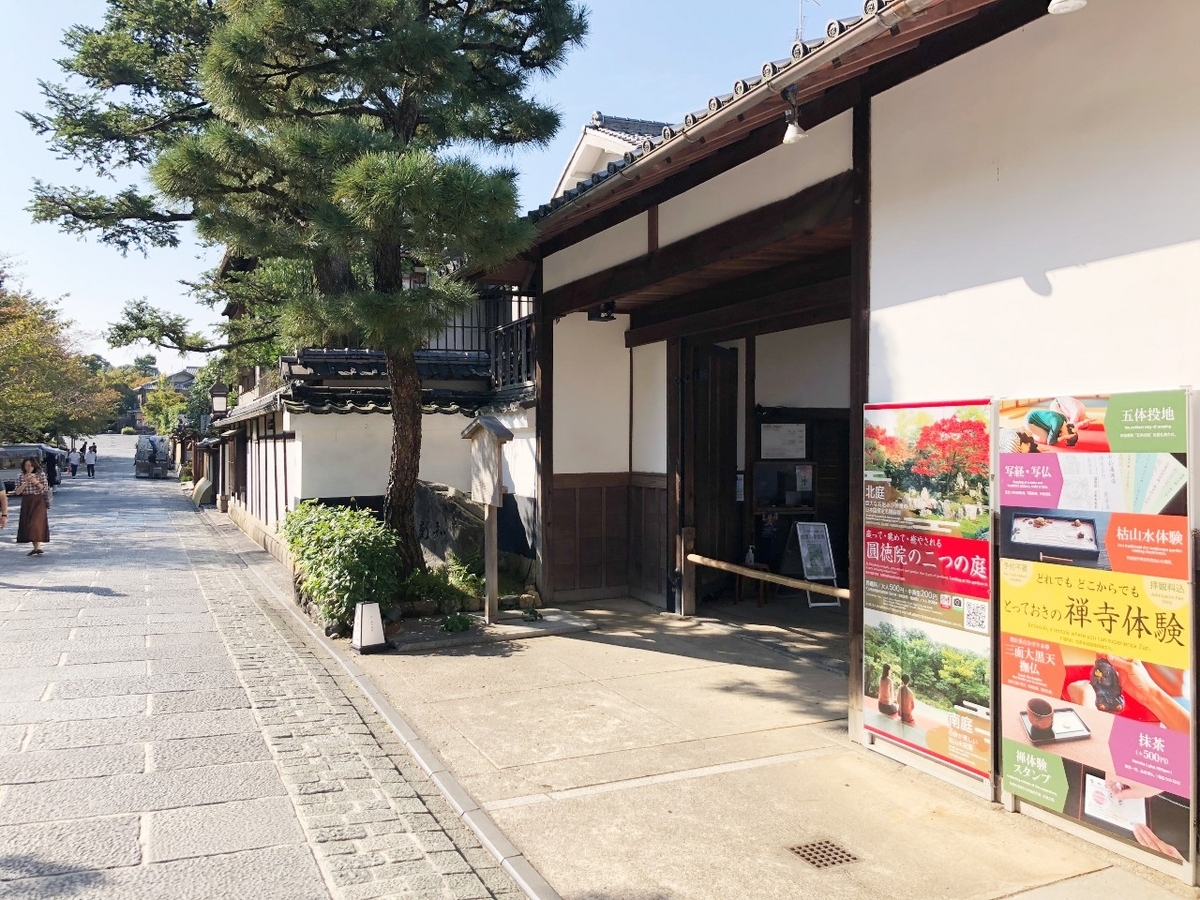
Entoku-in Temple
If you proceed south on Nene-no-Michi, you will soon see Kodaiji Temple on the left (east). This temple was built by Kitanomandokoro (Nene) to mourn the loss of her husband, Toyotomi Hideyoshi, and is also famous for its Kodaiji Makie lacquerware.
Entoku-in Temple, on the right (west), is a pagoda temple of Kodaiji Temple, and is said to be where Kitanomandoroko lived out the final years of her life.
4. Take Ninenzaka and Sannenzaka to Kiyomizu Temple
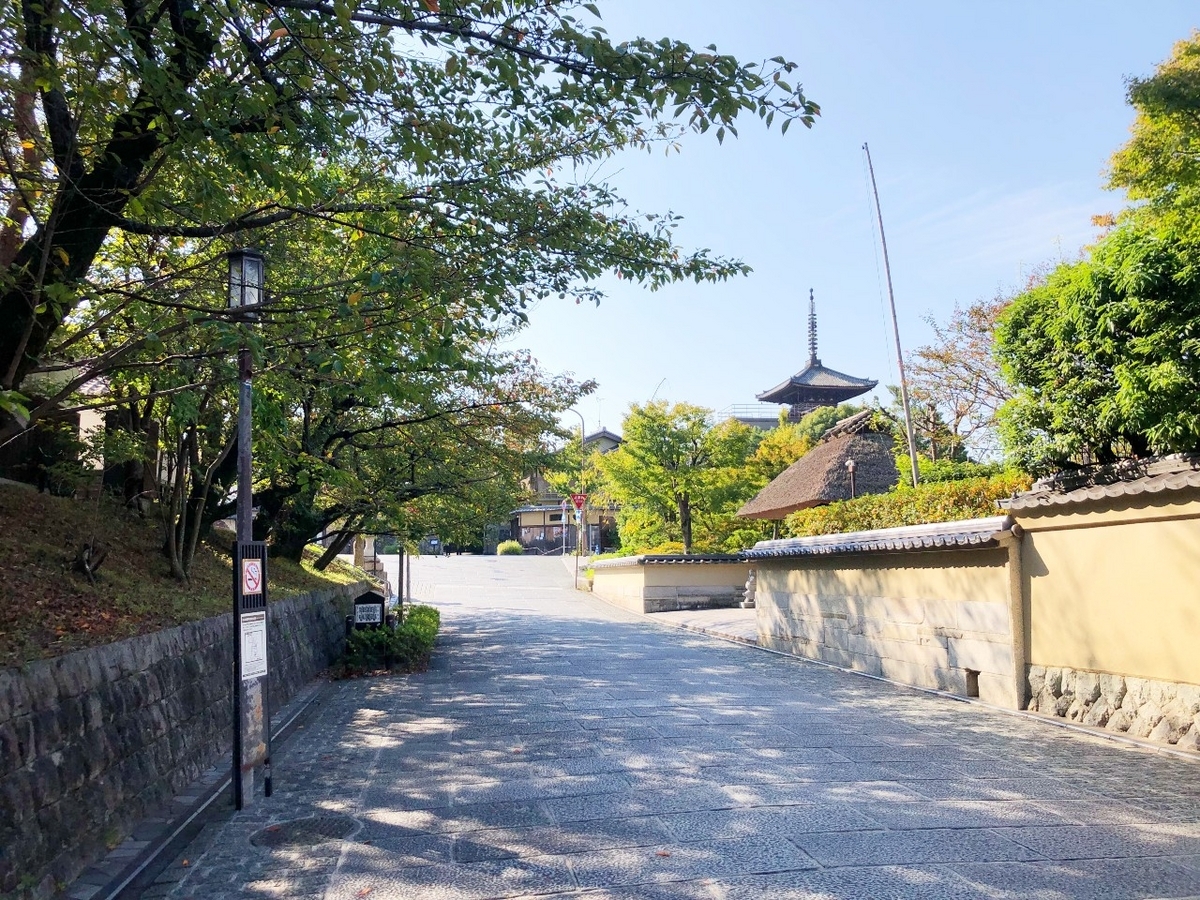
When you see the Yasaka Pagoda on your right (west), turn left. Next, you will be heading to Ninenzaka.
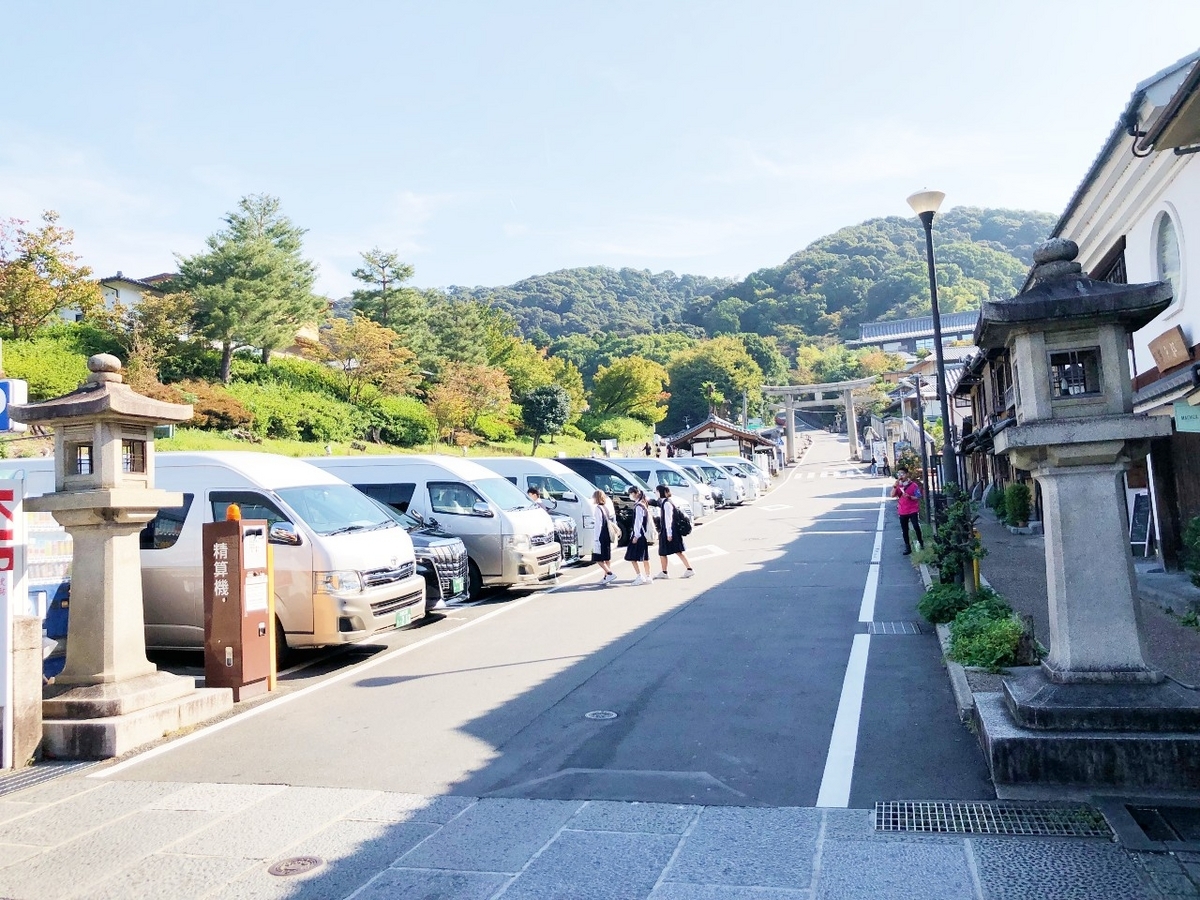
Ishin-no-Michi
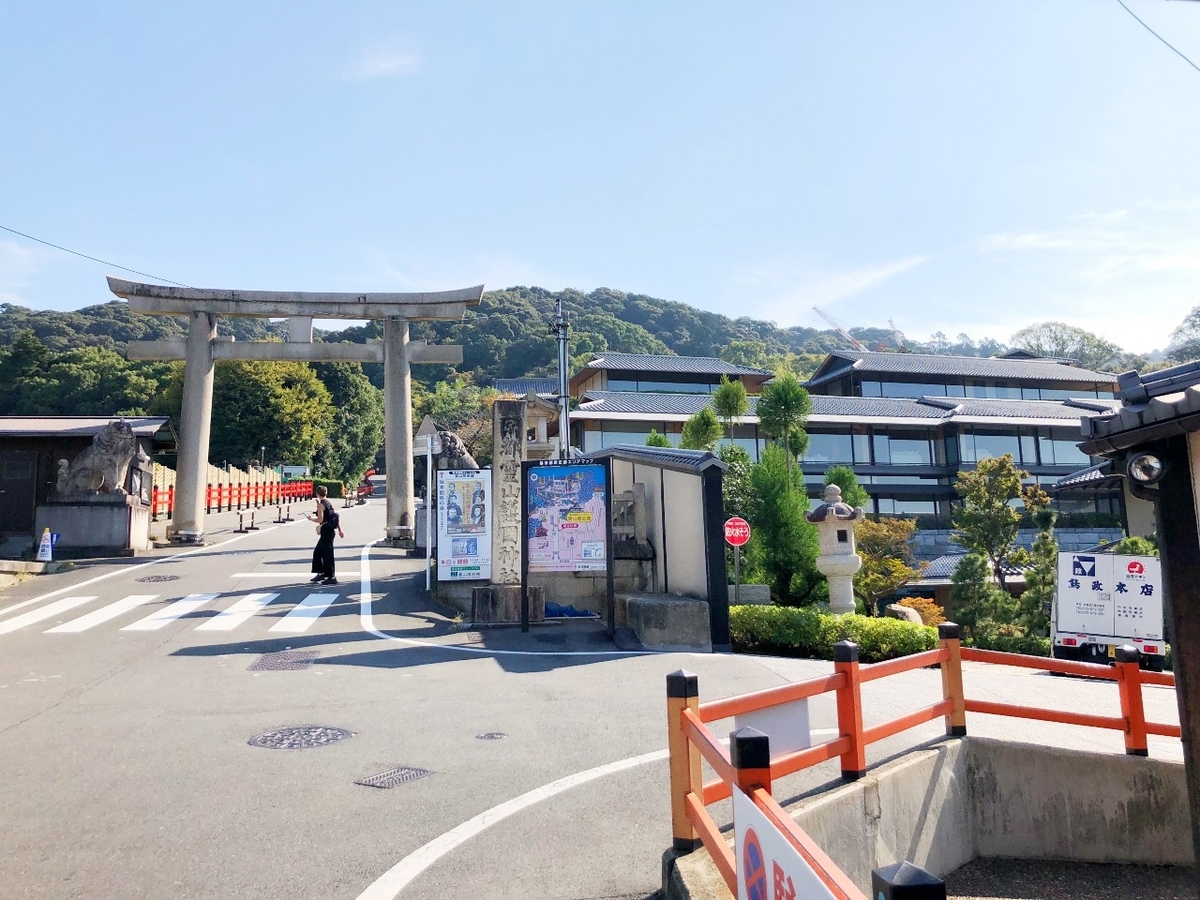
Torii Gate of Kyoto Ryozen Gokoku Shrine
Turn left (east), and there will be a road (Ishin-no-Michi) with a torii gate at the end of it. Go straight along this road. When you reach the torii gate, turn right (south) to enter Ninenzaka.
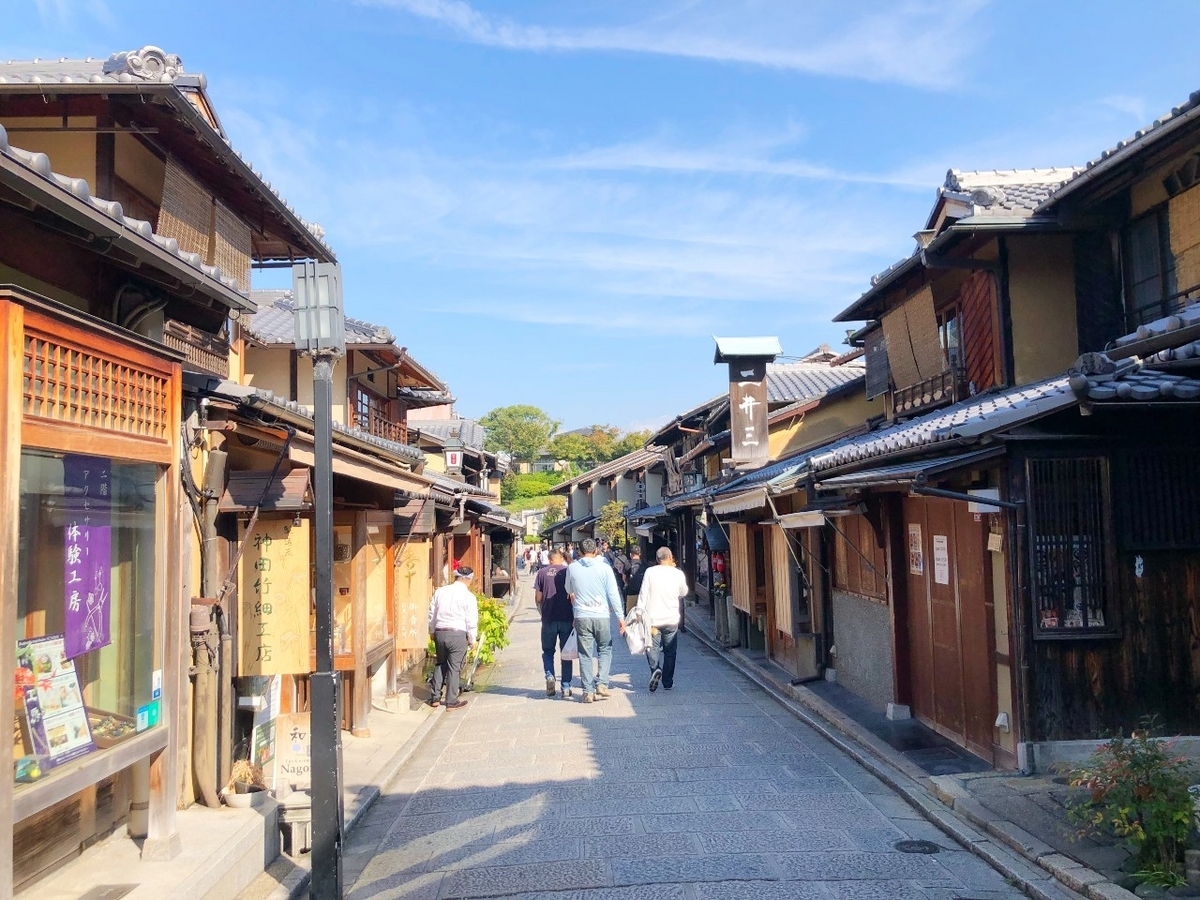
Ninenzaka
This road is lined with buildings that have a typically Japanese appearance. There are also many souvenir shops and restaurants that are fun to stop by along the way. After walking for about 5 minutes, climb the steps and proceed to the left to reach Sannenzaka.
If you go in the opposite direction, you will arrive at the scenic spot known as Yasaka Pagoda.
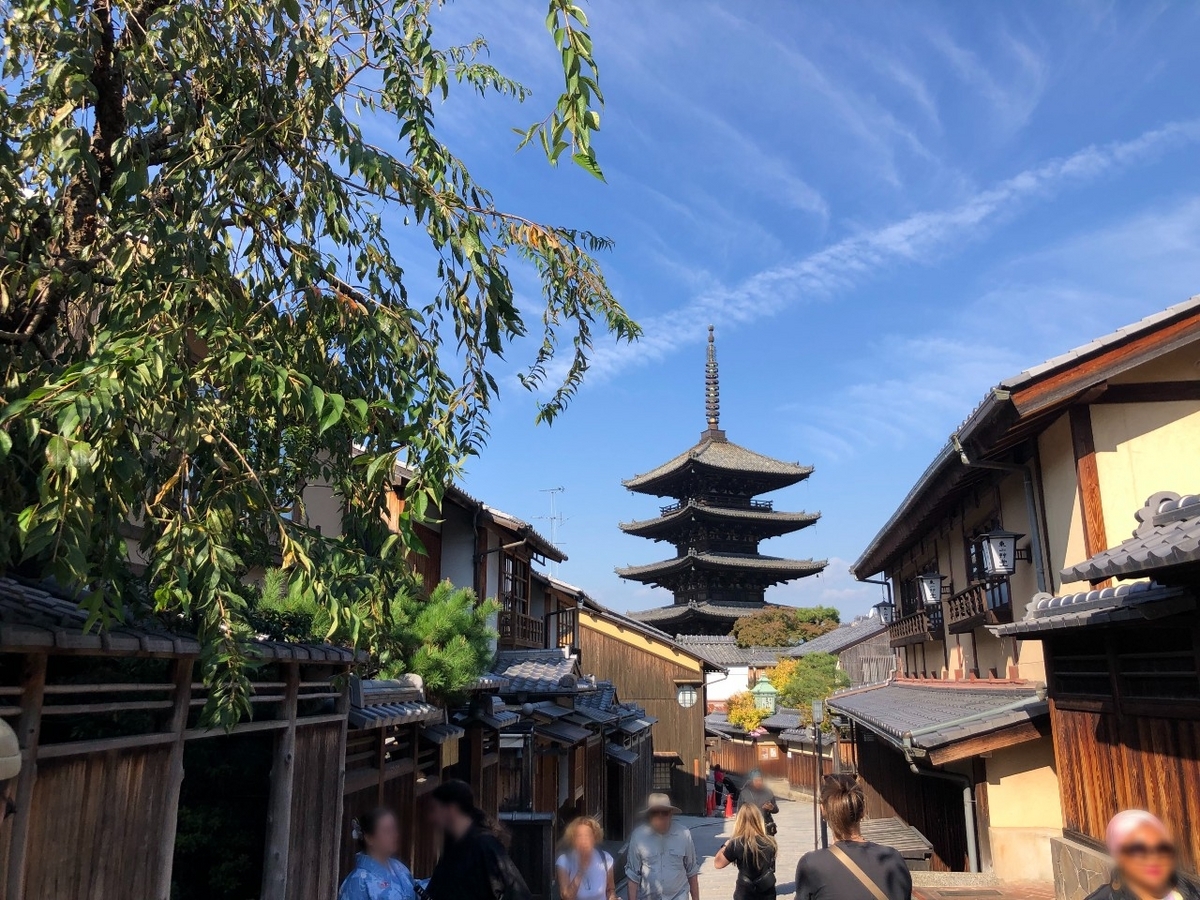
Yasaka Pagoda
Proceed along Sannenzaka, continuing up the hill for about 10 minutes, until you come to another set of steps. Turn left (east) and go straight along Kiyomizuzaka for about 5 minutes, and you will reach Kiyomizu Temple. There are lots of souvenir shops on both sides of the road, so after your visit to the temple, feel free to have a look at the shops on your way back down the hill.
Let Hands-Free Travel take care of your luggage at Kyoto Station and other locations
In Kyoto, there are many places where you can have your luggage transported from the station to your accommodation or where you can temporarily store your baggage.
1. Transport
This service arranges for your luggage to be sent from the station to your accommodation, from your accommodation to the station, or from one accommodation to another. If you complete the procedures by a certain time, you can even receive your luggage on the same day.
2.Hand over at the counter
This service lets you check at the counter baggage that is too big to fit in a locker.
3.Put in a locker
This is a convenient option that is available any time the station is open.
Find and make use of the service that best meets your needs.
There are also lots of other facilities in addition to Kyoto Station where you can leave your luggage. Getting rid of that heavy baggage can help make your sightseeing easy and stress-free. Relieve yourself of that heavy load and enjoy some “Hands-Free Travel”.
HANDS FREE KYOTO official website
There are a number of famous temples, shrines, and other sightseeing spots between Higashiyama Station and Kiyomizu Temple.
Buses can get crowded during tourism season, so walking from Subway Higashiyama Station is a much more comfortable way to enjoy your sightseeing. It’s also a great way to enjoy the beautiful townscapes and scenery of Kyoto.
Related Articles


